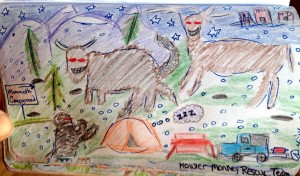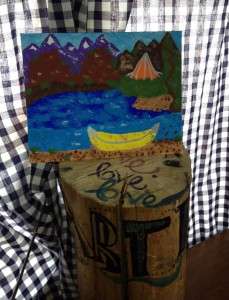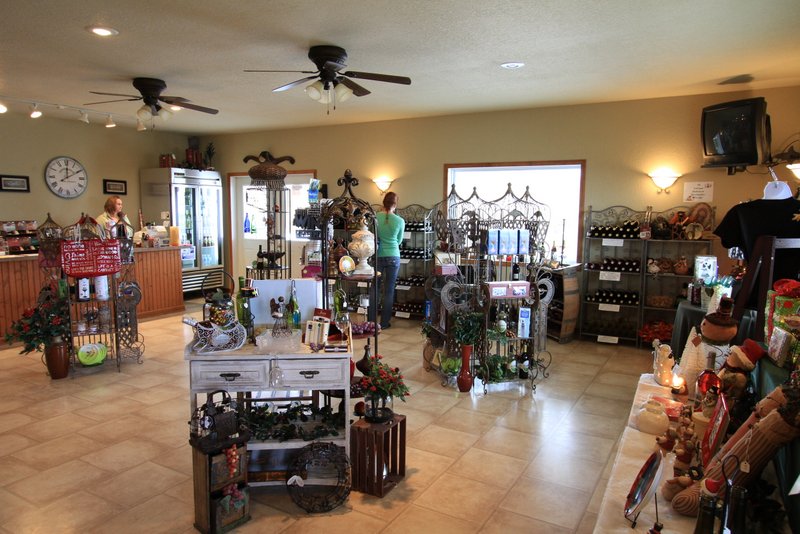Billings, Montana is more than just a pit stop on the way to Yellowstone. As I’ve learned first hand, it’s also a great place to find a good variety of local brews. Despite a population barely over 100,000, Billings has four breweries in walking distance of each other.
In fact, the official Montana travel site, boasts about having the only unofficial walking brewery tour in the state. Since everything is within a one-mile radius, they suggest making the rounds before dinner with stops at the Western Heritage Center and Yellowstone Art Museum along the way.
So what makes the breweries in Billings stand out from those in other areas? I’ve never seen more different types of brewery environments crammed together in the same city. From noisy punk rock warehouses to upscale restaurants to auto repair shop kegs, Billings’ brewers have mastered the art of variety.
Angry Hank’s Brewing Co.
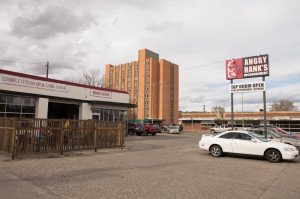 I briefly glanced at an auto repair shop while driving down the dusty, industrial main drag in Billings.”Complete tune-up & carb. repair,” said one sign. “Brake repair,” said another. A sign at the edge of the parking lot said, “Angry Hank’s.”
I briefly glanced at an auto repair shop while driving down the dusty, industrial main drag in Billings.”Complete tune-up & carb. repair,” said one sign. “Brake repair,” said another. A sign at the edge of the parking lot said, “Angry Hank’s.”
This was the first brewery I visited in Billings. The tap room, which was situated inside of an abandoned auto shop, was only open from 4-8pm Mondays through Saturdays. I later learned from a local that Montana law allows breweries to operate without a liquor license as long as they maintain very restricted hours and limit the amount of beer served per person.
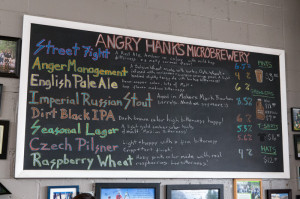 There were a few people sitting at tables inside a wooden fence patio that aimed to make the auto shop tap room more inviting. There’s no denying that the patio did bring a friendlier vibe than the staff. There was a good number of people hanging out in the tap room and I felt all eyes on me as I walked in. Clearly, I wasn’t recognized as the local girl next door.
There were a few people sitting at tables inside a wooden fence patio that aimed to make the auto shop tap room more inviting. There’s no denying that the patio did bring a friendlier vibe than the staff. There was a good number of people hanging out in the tap room and I felt all eyes on me as I walked in. Clearly, I wasn’t recognized as the local girl next door.
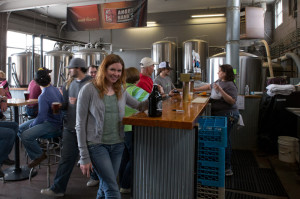 Angry Hanks doesn’t do samplers or flights, so don’t bother asking for one. The bartender agreed to give us a couple of tastes to see what we wanted a pint or growler of though. I tried the Anger Management, Imperial Russian Stout, and Raspberry Wheat.
Angry Hanks doesn’t do samplers or flights, so don’t bother asking for one. The bartender agreed to give us a couple of tastes to see what we wanted a pint or growler of though. I tried the Anger Management, Imperial Russian Stout, and Raspberry Wheat.
The Raspberry Wheat was tart, bitter, and ultra-light…as expected. The Imperial Stout was good, but wasn’t served in growlers because of the 8.5% alcohol content. What a pity! Therefore, I settled on the Anger Management for a growler fill. It wasn’t anything to write home about, but the orange-infused Belgian wheat was smooth and refreshing. Plus, it kept the anger of Angry Hanks alive all the way back to the cheap motel room.
Montana Brewing Co.
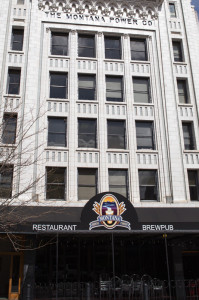 In stark contract to Angry Hanks, the Montana Brewing Company was reminiscent of brew pubs back in Chicago. Although the brewery was built in 1994, the exterior and interior of the building seemed brand new. And although it was the middle of the day, the brew pub, which was located in the downtown shopping district, pulled in a decently sized crowd.
In stark contract to Angry Hanks, the Montana Brewing Company was reminiscent of brew pubs back in Chicago. Although the brewery was built in 1994, the exterior and interior of the building seemed brand new. And although it was the middle of the day, the brew pub, which was located in the downtown shopping district, pulled in a decently sized crowd.
Also unlike Angry Hanks, this brewery promoted its samplers. I tried an eight-sample flight of the MBC Golden Ale, MBC Wheat, Pomegranate Wheat, Smoked Rye, MBC Amber, Custer’s Last Stout, and Beartooth Espresso Porter.
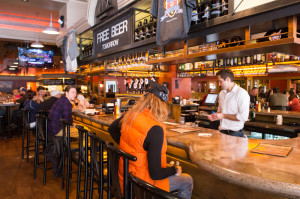 I tend to be partial towards breweries that go beyond the standard brews and try a few outside-the-box flavors.Three of MBC’s brews met my approval in this regard. Although I wanted to like the Pomegranate Wheat more than I did, it was still unique. It actually smelled and tasted like pomegranate. The brew had a milky color and a tart aftertaste. I didn’t like the Pomegranate Wheat enough to get more of a pint of it, but I did appreciate it for its novelty.
I tend to be partial towards breweries that go beyond the standard brews and try a few outside-the-box flavors.Three of MBC’s brews met my approval in this regard. Although I wanted to like the Pomegranate Wheat more than I did, it was still unique. It actually smelled and tasted like pomegranate. The brew had a milky color and a tart aftertaste. I didn’t like the Pomegranate Wheat enough to get more of a pint of it, but I did appreciate it for its novelty.
 The Smoked Rye, however, was phenomenal and I promptly picked up a growler of it. Unlike many smoky beers, it had a perfect amount of smokiness. Since I was just starting out on an extended camping trip, this brew fit my lifestyle and brought back memories of roasting s’mores around the fire.
The Smoked Rye, however, was phenomenal and I promptly picked up a growler of it. Unlike many smoky beers, it had a perfect amount of smokiness. Since I was just starting out on an extended camping trip, this brew fit my lifestyle and brought back memories of roasting s’mores around the fire.
I also picked up a growler of the Beartooth Espresso Porter. It was evident that the brewers used real espresso beans, and it was delicious from start to finish. It wasn’t overly bitter, in a black coffee sort of way, but it definitely put anything from Starbucks to shame. Although I didn’t dine at MBC, I couldn’t help but notice their extensive American fare menu.
Carter’s Brewing Co.
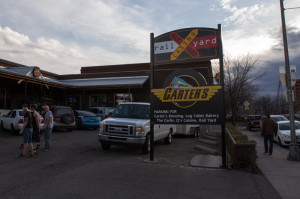 Carter’s Brewing Company was somewhat of a cross between the previous two breweries in terms of atmosphere. But unlike the other two, a punk rock band was setting up in the casino area.
Carter’s Brewing Company was somewhat of a cross between the previous two breweries in terms of atmosphere. But unlike the other two, a punk rock band was setting up in the casino area.
 Located in the warehouse district and along the train tracks, Carter’s had a hard rock biker bar feel. The most memorable part of Carter’s was the mind-shattering acoustics. Despite the number of drum sets sitting around, the bands had yet to go on stage. However, the sound of people yelling over each other bounced off the walls in a most deafening way.
Located in the warehouse district and along the train tracks, Carter’s had a hard rock biker bar feel. The most memorable part of Carter’s was the mind-shattering acoustics. Despite the number of drum sets sitting around, the bands had yet to go on stage. However, the sound of people yelling over each other bounced off the walls in a most deafening way.
The brewery’s seating area featured long, wooden tables that were surrounded by beer barrels and brewing vats. It was a cramped, bare bones tap room, but the staff was friendly. Carter’s also does samplers (of four beers each) which include their many seasonal beers. In fact, they have just as many seasonal beers as they do flagship beers.
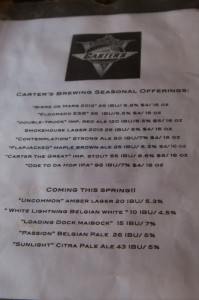 The Farmhouse Ale La Grisette has a fancy name, but not a fancy taste. It was pretty standard, yet well done and smooth. I wanted to like the Maple Flapjack Brown Ale more than I did. However, it did have a pretty good maple smell, a soft finish, and it was better than your average brown ale.
The Farmhouse Ale La Grisette has a fancy name, but not a fancy taste. It was pretty standard, yet well done and smooth. I wanted to like the Maple Flapjack Brown Ale more than I did. However, it did have a pretty good maple smell, a soft finish, and it was better than your average brown ale.
The Double Truck Red Ale was way too hoppy. Not even the 8% alcohol and slight creaminess could counteract the pure hop fest. The last beer in my sampler was the Carter the Great Imperial Stout. Similar to the maple ale, it had a soft taste that was buttery at the finish. It wasn’t terribly unique, but it was better than most imperial stouts I’ve had.
Yellowstone Brewing Co.
Everyone has a story about the one that got away. And for me, that one was the Yellowstone Brewing Company. Unlike others in Billings, this brewery was closed on Sunday…which was the only day I had available to stop by.
I heard good things about Yellowstone Brewing from Carter’s Brewing, which also sold some of their beers. While chatting with the bartender at Carters, it became clear that the smaller, industrial breweries (like Carter’s and Yellowstone) had a certain distaste for corporate sellouts (like Montana Brewing Co.).
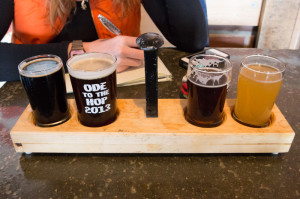 Although I missed my chance to visit Yellowstone Brewing, I was later able to pick up some of their bottled beer in other Montana towns. The Huckleweizen celebrates the state’s obsession with the huckleberry, which grows in the vicinity. It’s very light and tart…good in small doses on a hot, summer day. The Black Widow Oatmeal Stout was a solid beer that had a good balance between heaviness and flavor.
Although I missed my chance to visit Yellowstone Brewing, I was later able to pick up some of their bottled beer in other Montana towns. The Huckleweizen celebrates the state’s obsession with the huckleberry, which grows in the vicinity. It’s very light and tart…good in small doses on a hot, summer day. The Black Widow Oatmeal Stout was a solid beer that had a good balance between heaviness and flavor.
All in all, Billings reminded me that just because I’d seen one brewery, it doesn’t mean I’ve seen them all. If I would have only stopped at one of Billings’ breweries, I would have assumed that that was representative of the city. Even though I don’t exactly associate Montana with diversity, Billings’ tasting establishments proved to be an exception to the rule.

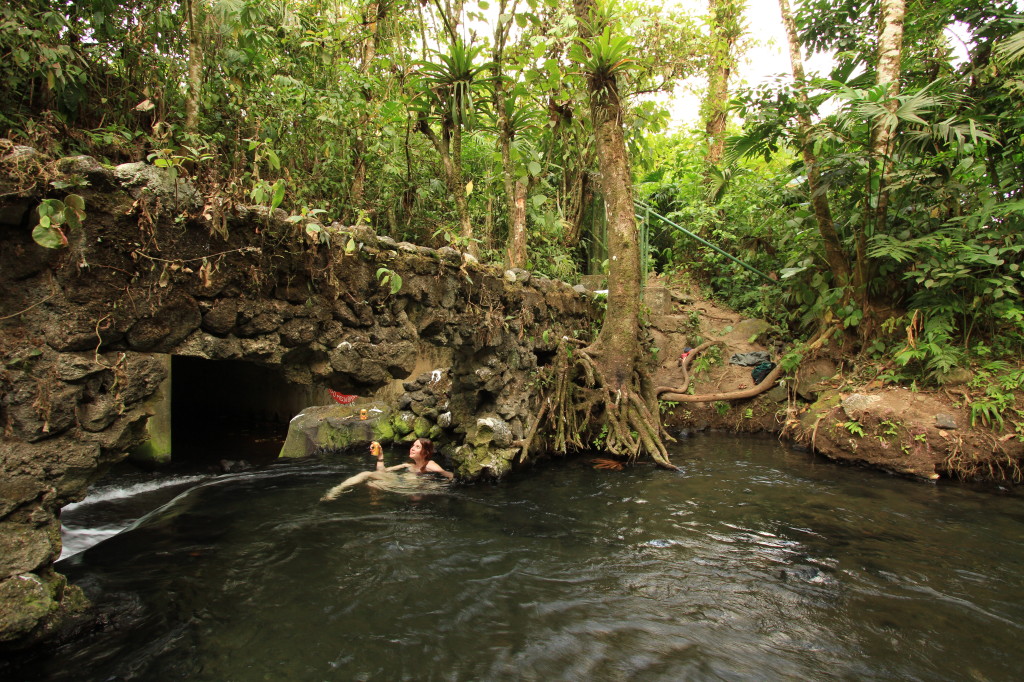
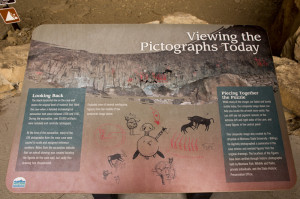
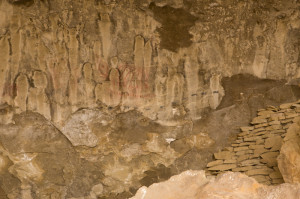
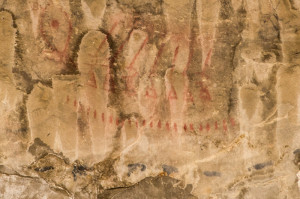

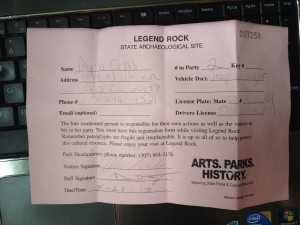
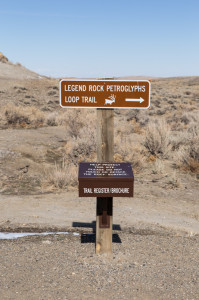
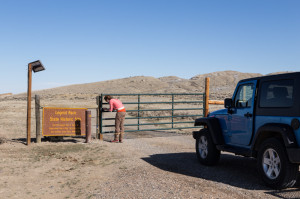
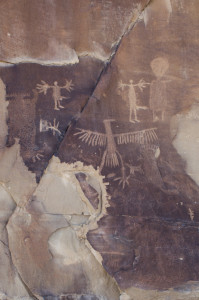
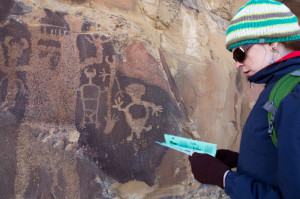
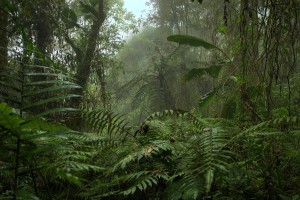

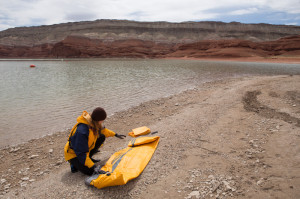


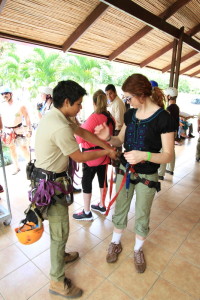
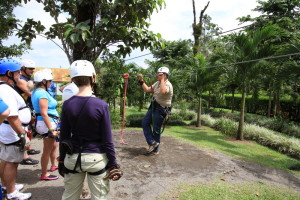

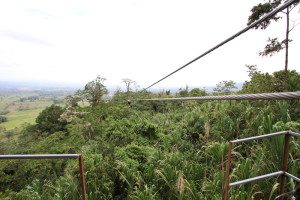











![IMG_0602[1]](http://www.alyssavnature.com/wp-content/uploads/2013/05/IMG_06021-300x225.jpg)
![IMG_0601[1]](http://www.alyssavnature.com/wp-content/uploads/2013/05/IMG_06011-300x225.jpg)
